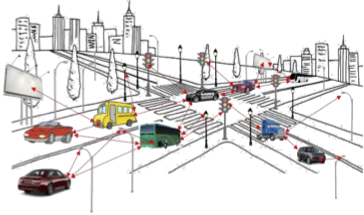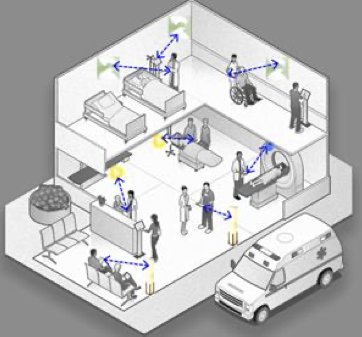Integrated Circuit System-On-Chip And System-In-A-Package For Visible Light Communications And Navigation
Patent Status
| Country | Type | Number | Dated | Case |
| United States Of America | Issued Patent | 10,244,590 | 03/26/2019 | 2014-812 |
Full Description
Background
Wireless Visible Light Communication (VLC) is enabled by Light Emitting Diodes (LED) and their ability to switch on/off at tens of MHz without flickering. Visible Light Communication offers significant advantages over Radio Frequency (RF) based wireless communication.
- Optical spectrum offers a bandwidth upto 300 THz thereby allowing for streaming at multiple gigabits per second.
- Data rates can be boosted with more emission power without harm to human beings.
- Unable to penetrate walls, VLC is inherently secure.
- Being interference free, VLC can co-exist with and complement existing RF technology.
- VLC devices are inexpensive compared to multi-gigahertz RF devices.
Current VLC systems are essentially a Lego-type testbed that have significant disadvantages. These include:
- Large size and complex electronics.
- Low performance, low reliability and high cost.
Current Invention
Prof. Wang at UCR has developed a patented, system-in-a-package (SIP) and system-on-a-chip (SoC) architecture for VLC that integrates all the electronic circuits with the LEDs and photodetectors (PD) to make VLC and Visible Light Positioning (VLP) systems with integrated opto-electronics.

A VLC-based Ad Hoc smart traffics system scenario.

Illustration of an LED-based VLC system scenario for smart hospitals using a given hospital layout.
Advantages
The novelty and benefits of this design and architecture are:
Suggested uses
- Smart cities
- Smart wireless communication in:
- RF prohibited hospital setting
- Smart traffic control, car-to-car collision avoidance and signal data broadcasting
- Home/Office with higher security, bandwidth, and data rate
- Retail/Store setting
- Ubiquitous energy efficient computing & Greener broadband wireless communication
- Video streaming over light
- Smart locks
State Of Development
Prototype built and tested
Related Materials
Contact
- Venkata S. Krishnamurty
- venkata.krishnamurty@ucr.edu
- tel: View Phone Number.
Other Information
Keywords
Big data transmission, Data transfer, Broadband wireless, LED, Photodetector, Visible light communication, Visible light positioning, Wireless communication, Smart locks
